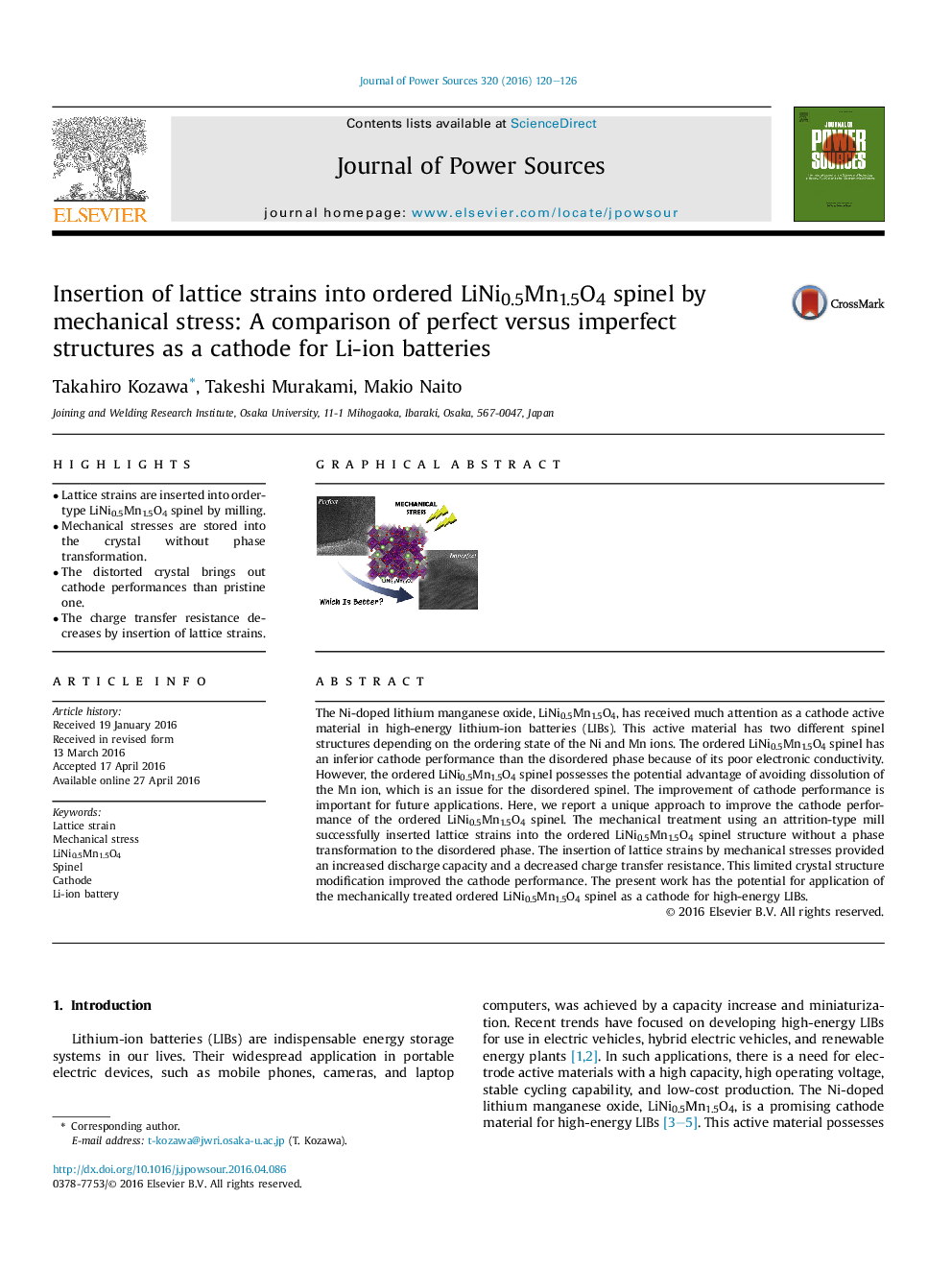| Article ID | Journal | Published Year | Pages | File Type |
|---|---|---|---|---|
| 1286046 | Journal of Power Sources | 2016 | 7 Pages |
•Lattice strains are inserted into order-type LiNi0.5Mn1.5O4 spinel by milling.•Mechanical stresses are stored into the crystal without phase transformation.•The distorted crystal brings out cathode performances than pristine one.•The charge transfer resistance decreases by insertion of lattice strains.
The Ni-doped lithium manganese oxide, LiNi0.5Mn1.5O4, has received much attention as a cathode active material in high-energy lithium-ion batteries (LIBs). This active material has two different spinel structures depending on the ordering state of the Ni and Mn ions. The ordered LiNi0.5Mn1.5O4 spinel has an inferior cathode performance than the disordered phase because of its poor electronic conductivity. However, the ordered LiNi0.5Mn1.5O4 spinel possesses the potential advantage of avoiding dissolution of the Mn ion, which is an issue for the disordered spinel. The improvement of cathode performance is important for future applications. Here, we report a unique approach to improve the cathode performance of the ordered LiNi0.5Mn1.5O4 spinel. The mechanical treatment using an attrition-type mill successfully inserted lattice strains into the ordered LiNi0.5Mn1.5O4 spinel structure without a phase transformation to the disordered phase. The insertion of lattice strains by mechanical stresses provided an increased discharge capacity and a decreased charge transfer resistance. This limited crystal structure modification improved the cathode performance. The present work has the potential for application of the mechanically treated ordered LiNi0.5Mn1.5O4 spinel as a cathode for high-energy LIBs.
Graphical abstractFigure optionsDownload full-size imageDownload as PowerPoint slide
